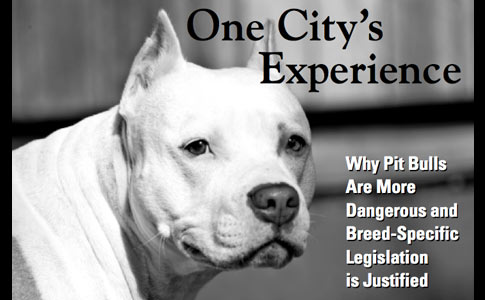Marine Corps Pet Policy
Virginia - Following the April action of Marine Corps Base Camp Lejeune, which banned pit bulls, rottweilers, wolf hybrids and their mixes from base housing and prohibited visitors from bringing them onto base, the U.S. Marine Corps recently adopted the same policy for all U.S. and overseas Marine Corps installations. The new uniform pet policy cites similar language as spoken by base commanding officer Col. Richard P. Flatau Jr. following Camp Lejeune's policy shift:
"These specific breeds present an unreasonable risk to the health and safety of our residents and are therefore prohibited."
The new policy (MCO P11000.22 Ch 6) was signed by Maj. Gen. Edward Usher III, deputy commandant of installations and logistics, on August 11, 2009. The policy pertains to all government-owned family housing and Public Private Venture (PPV) privatized housing areas located or accessed by the Marine Corps installation. Current owners of these breeds have 60 days to receive approval of a waiver and to pass a nationally recognized temperament test.
The "grandfather" waiver of the new uniform pet policy is viable until 30 September 2012 only. Specifically, after this date, pit bulls, rottweilers, wolf hybrids and their mixes will be wholly restricted from Marine Corps privatized housing areas, as well as Marine Corps installations. After this date, owners of "grandfathered" dogs must either find off base arrangements for their pets, or move from government-owned family housing or PPV privatized housing facilities.
Chapter 5: Domestic Animal Control
5002. BACKGROUND INFORMATION. Pet ownership for those service members and their families residing in government-owned or PPV family housing provides a real and tangible benefit, and contributes to the Quality of Life for resident families. However, the rise in ownership of large dog breeds with a predisposition toward aggressive or dangerous behavior, coupled with the increased risk of tragic incidents involving these dogs, necessitates a uniform policy to provide for the health, safety and tranquility of all residents of family areas.
5003. PROHIBITED DOG BREEDS. Pit Bulls, Rottweilers, canid/wolf hybrids, or any canine breed with dominant traits of aggression present an unreasonable risk to the health and safety of personnel in family housing areas. Consequently, full or mixed breeds of Pit Bulls, Rottweilers and canid/wolf hybrids are prohibited aboard Marine Corps installations. In the absence of formal breed identification (e.g., certification by a civilian organization such as the American Kennel Club) a Corps Officer (VCO) or a civilian veterinarian.
5004. REQUESTS FOR WAIVER AND GRANDFATHER CLAUSE
1. Grandfather Waiver Requests. Residents of government-owned or PPV-owned family housing currently in possession of properly registered dogs meeting the prohibited breed or mixed breeds noted in paragraph 5003 above, may keep their pet dog in family housing through 30 September 2012 provided the following "grandfather" provisions are met:
a.) Pet owner residents must submit for waiver to this policy within 60 calendar days from the date of the signature of Change 6 to this Order, and receive approval of waiver from the local installation commander.
b.) Dogs to be waived under this policy must pass a nationally recognized temperament test, administered and interpreted by individual(s) who have been certified in the technique and evaluation of the test results, at the service member resident's expense. Such tests include Canine Good Citizen (AKC) and the Delta Test (Delta Society). Questionable animals may be referred to a boar certified veterinary behaviorist. At no time will waiver authority for purposes of "grandfathering" be delegated below the 0-6 level.
The bold, underlined emphasis was done by the Marine Corps.
Related articles:
04/18/09: Marine Corps Base Camp Lejeune Bans Dangerous Dog Breeds
03/30/09: NYC Housing Authorities Ban Pit Bulls, Rottweilers and Dobermans
03/17/09: U.S. Army Adopts Breed Restriction Policy for RCI Privatized Housing



